Peach Banquet of the Immortals Scroll (蟠桃仙会图卷)
A Ming Dynasty Mythological Masterpiece (c. 16th Century)
Overview
Attributed to Qiu Ying (仇英, c. 1494–1552), one of the “Four Masters of the Ming Dynasty,” this silk scroll (40.5 cm × 780 cm) vividly depicts the celestial Peach Banquet, a central myth in Daoist cosmology. Though bearing Qiu Ying’s seal (仇英實父製), scholars now classify it as a “Suzhou-style workshop copy” (苏州片)—a high-quality Ming-era replica produced for wealthy patrons. Housed in Taipei’s National Palace Museum, the work blends meticulous gongbi (工笔) techniques with imaginative storytelling, reflecting both religious devotion and the booming art market of 16th-century Jiangnan.
Content & Symbolism
The scroll unfolds in three mythic acts:
- Journey to Immortality
- Celestial Procession: Immortals traverse mountains and seas using supernatural means—riding golden carp, floating on banana leaves, or steering petal-shaped boats. These motifs symbolize Daoist transcendence of earthly limitations.
- Cultural Roots: The Peach Banquet legend originates from Journey to the West, where the Queen Mother of the West (西王母) hosts deities with peaches of immortality every 3rd day of the 3rd lunar month.
- Harvesting Divine Peaches
- Divine Labor: Celestial maidens and boys gather peaches in jade baskets within a lingzhi mushroom-shaped garden (瑶圃), representing the Daoist pursuit of eternal youth.
- Architectural Grandeur: The Queen Mother’s palace features gold-leaf roofs and coral-red pillars, mirroring Ming imperial aesthetics.
- Audience with the Jade Emperor
- Cosmic Hierarchy: Deities kneel before the Jade Emperor (玉皇大帝) on a cloud-wreathed platform, reinforcing Confucian ideals of order within Ming cosmology.
Artistic Techniques
- Brushwork: Delicate mineral pigments (malachite green, azurite blue) define immortals’ robes, while “axe-cut” (斧劈皴) strokes texture cliffs, echoing Qiu Ying’s signature style.
- Composition: Diagonal lines guide the viewer’s eye from earthly mountains to celestial realms, a technique Qiu Ying refined through copying Tang-Song masterpieces.
Qiu Ying & Suzhou Forgeries
- The Artist: A Suzhou native, Qiu Ying rose from artisan to court painter via mentorship by Wen Zhengming. His works bridged scholarly elegance and folk vitality.
- Suzhou Workshops: By the mid-Ming, Suzhou’s booming economy fueled demand for “antique” art. Workshops mass-produced copies like this scroll, often falsely signed by famous artists. These forgeries, now called Suzhou pian (苏州片), ironically preserved classical techniques during commercialized production.
Translation with Cultural Notes
Original Chinese Text
此《蟠桃仙会图》卷题作明代仇英绘。画卷首段描绘群仙自山径逶迤而出,各显神通,渡海赴蟠桃盛会。次段描绘仙童天女于瑶圃采摘成熟蟠桃,成筐成盒送进王母娘娘的华丽殿宇。末段描绘群仙于高台上觐见玉皇大帝。此卷现藏于台北故宫博物院。蟠桃会是中国古代神话传说中的神仙宴会。相传三月初三为西王母(王母娘娘)的诞辰,当天西王母大开盛会,并以蟠桃为主食,宴请众仙,众仙赶赴瑶池为她祝寿,此即蟠桃仙会。此卷虽署「仇英實父製」,应为苏州片作坊生产的 “蟠桃仙会” 类作品。
English Translation with Annotations
“The Peach Banquet of the Immortals Scroll”
Attributed to Ming painter Qiu Ying, this scroll portrays the celestial Peach Banquet myth in three acts:
- Immortals’ Pilgrimage: Deities traverse landscapes using magical transports—golden carps, banana-leaf rafts, and petal boats—symbolizing Daoist transcendence.
- Divine Harvest: Celestial youths collect peaches in lingzhi-shaped gardens, evoking alchemical immortality.
- Imperial Audience: The Jade Emperor receives homage on a cloud platform, reflecting Ming cosmology’s blend of Daoist and Confucian ideals.
Key Cultural Context
- Peach Banquet: Held on the 3rd day of the 3rd lunar month for the Queen Mother of the West, a myth popularized by Journey to the West.
- Suzhou Workshops: Despite Qiu Ying’s seal, this work exemplifies Suzhou pian—commercially produced replicas that sustained classical techniques during the Ming art market boom.
Viewing Guide for Western Audiences
- Zoom-In Tip: Observe the immortals’ facial expressions—subtle variations distinguish deities (serene) from lesser spirits (playful).
- Comparative Art: Contrast with Qiu Ying’s authenticated works (e.g., Spring Morning in the Han Palace) to spot Suzhou pian traits: brighter pigments, flatter perspectives.

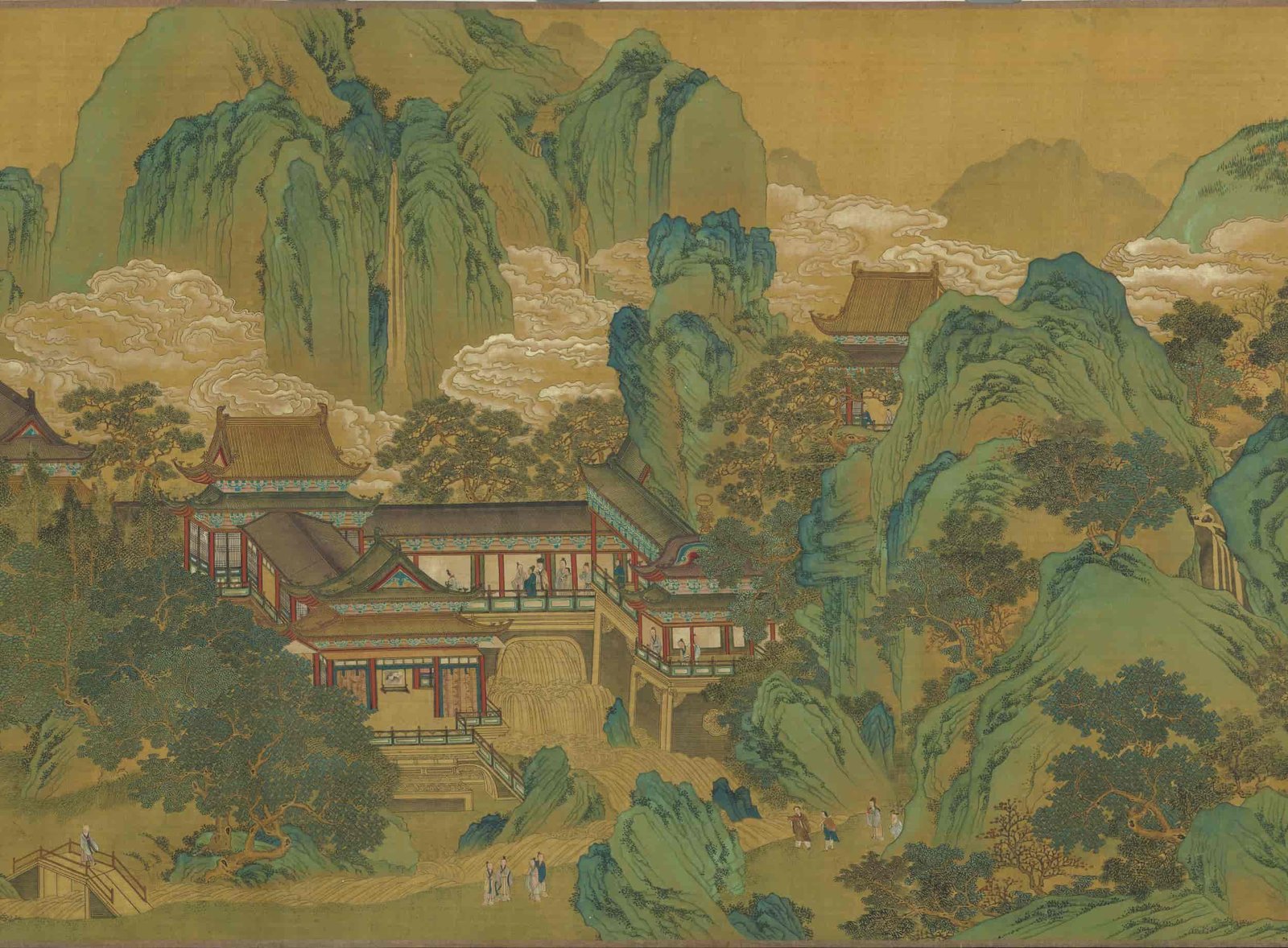
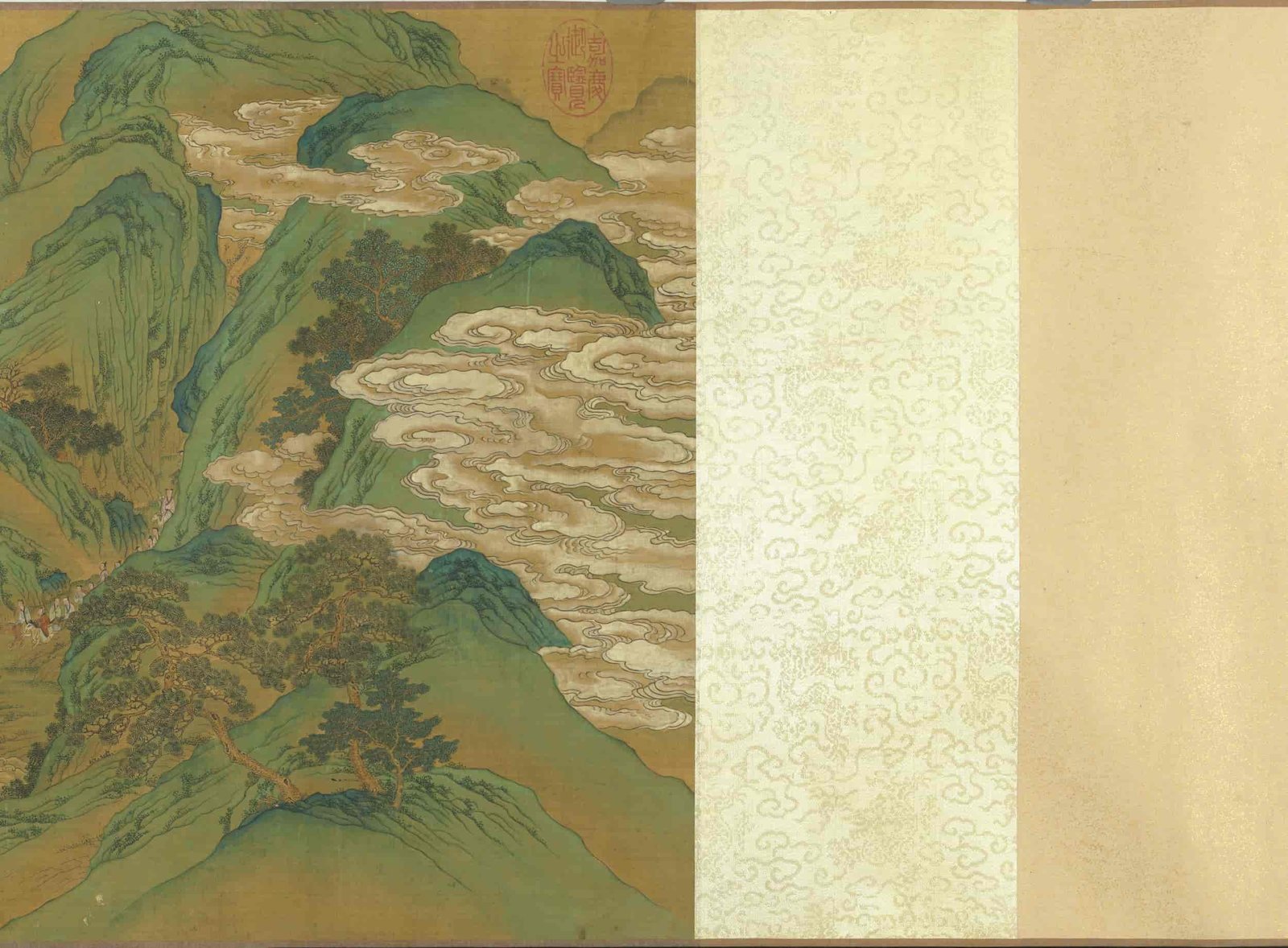
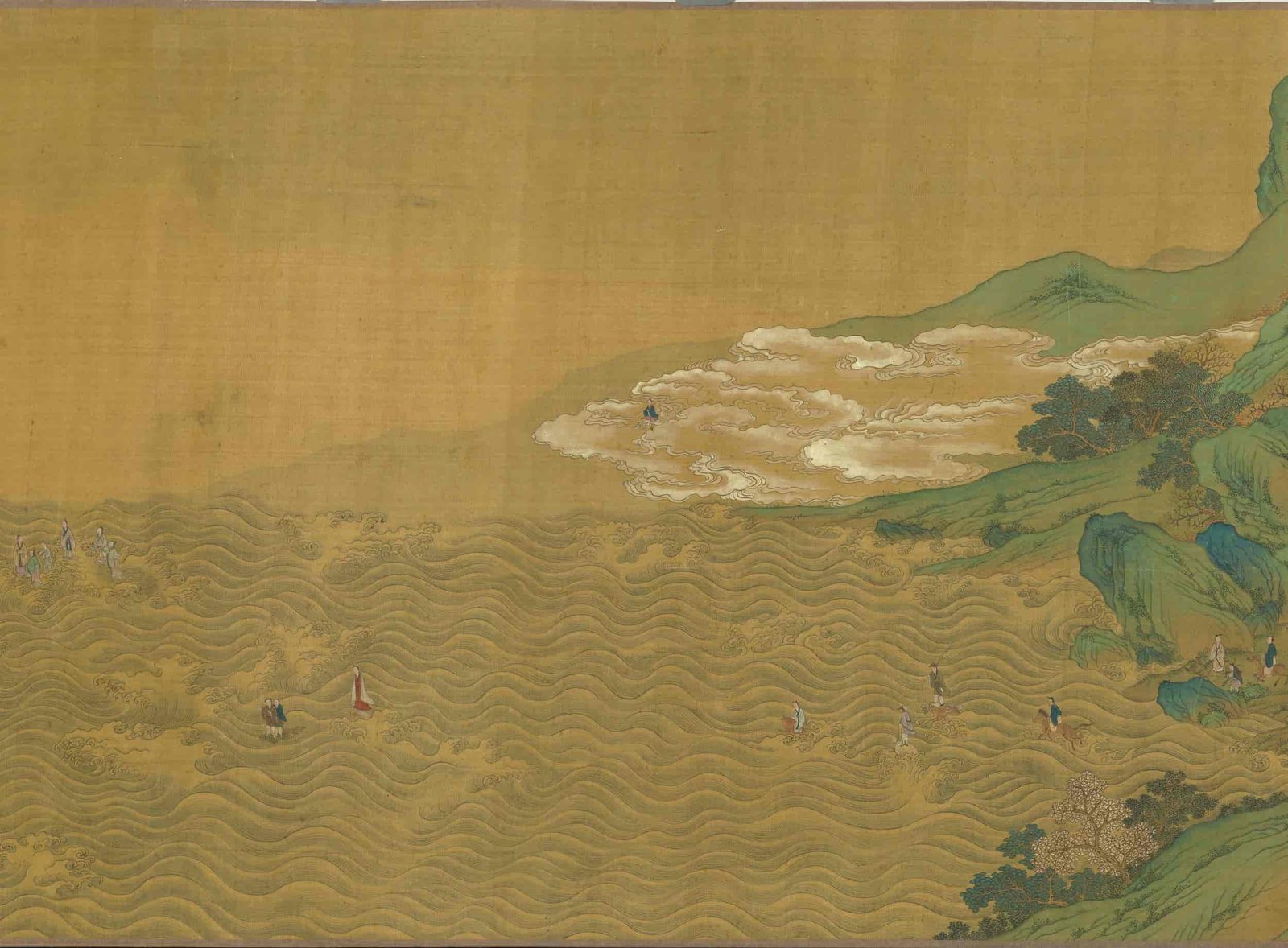
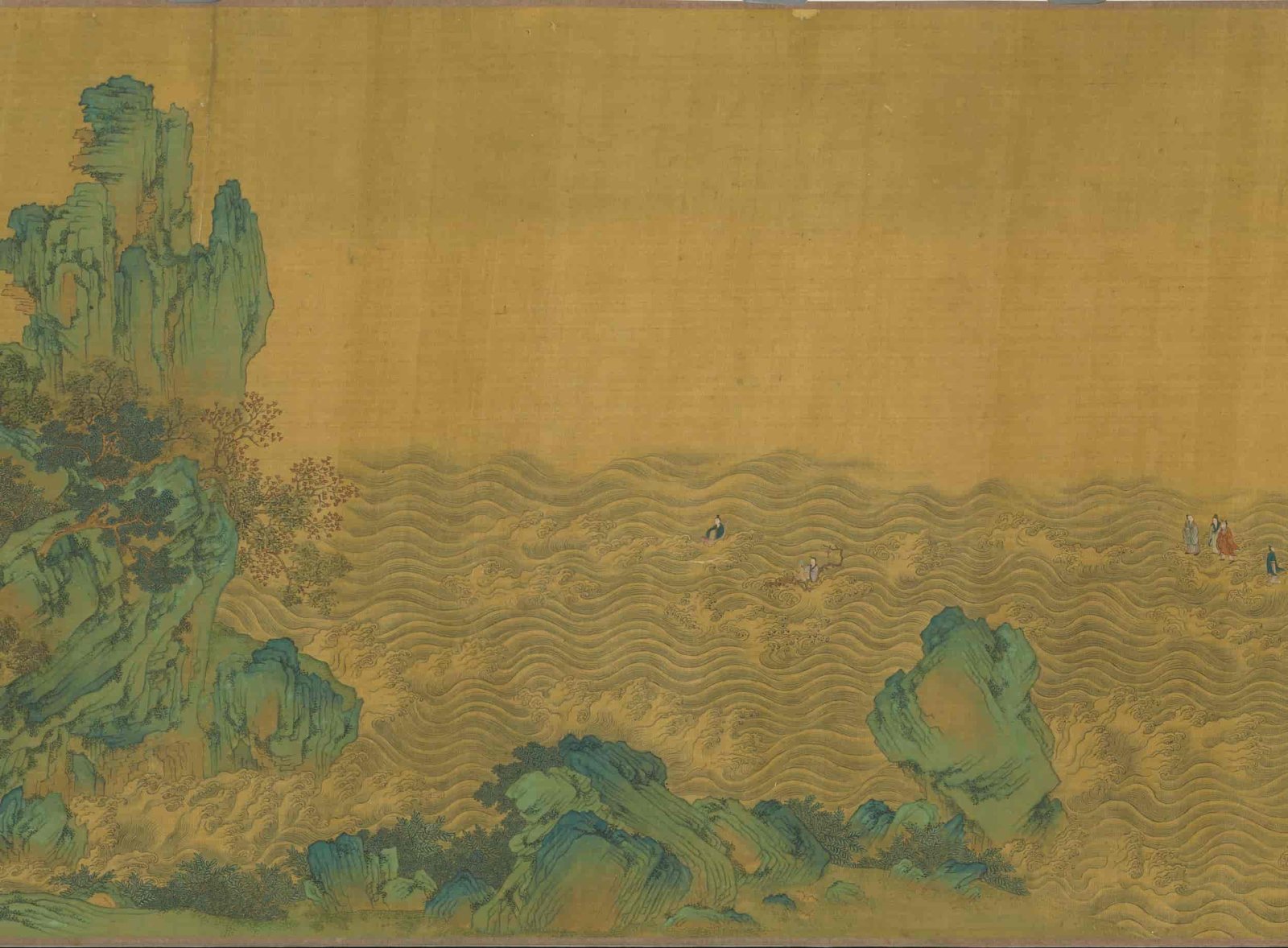
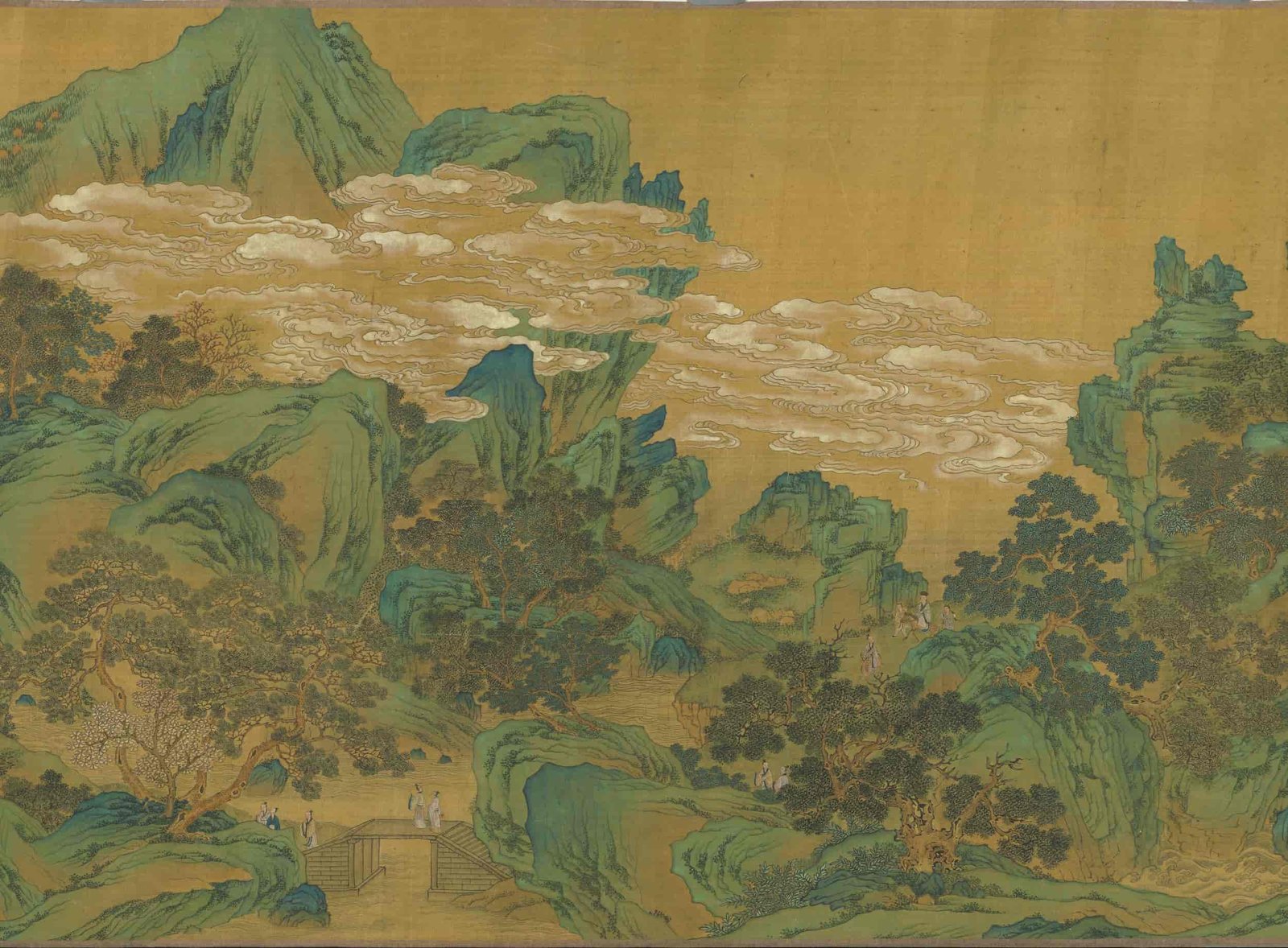
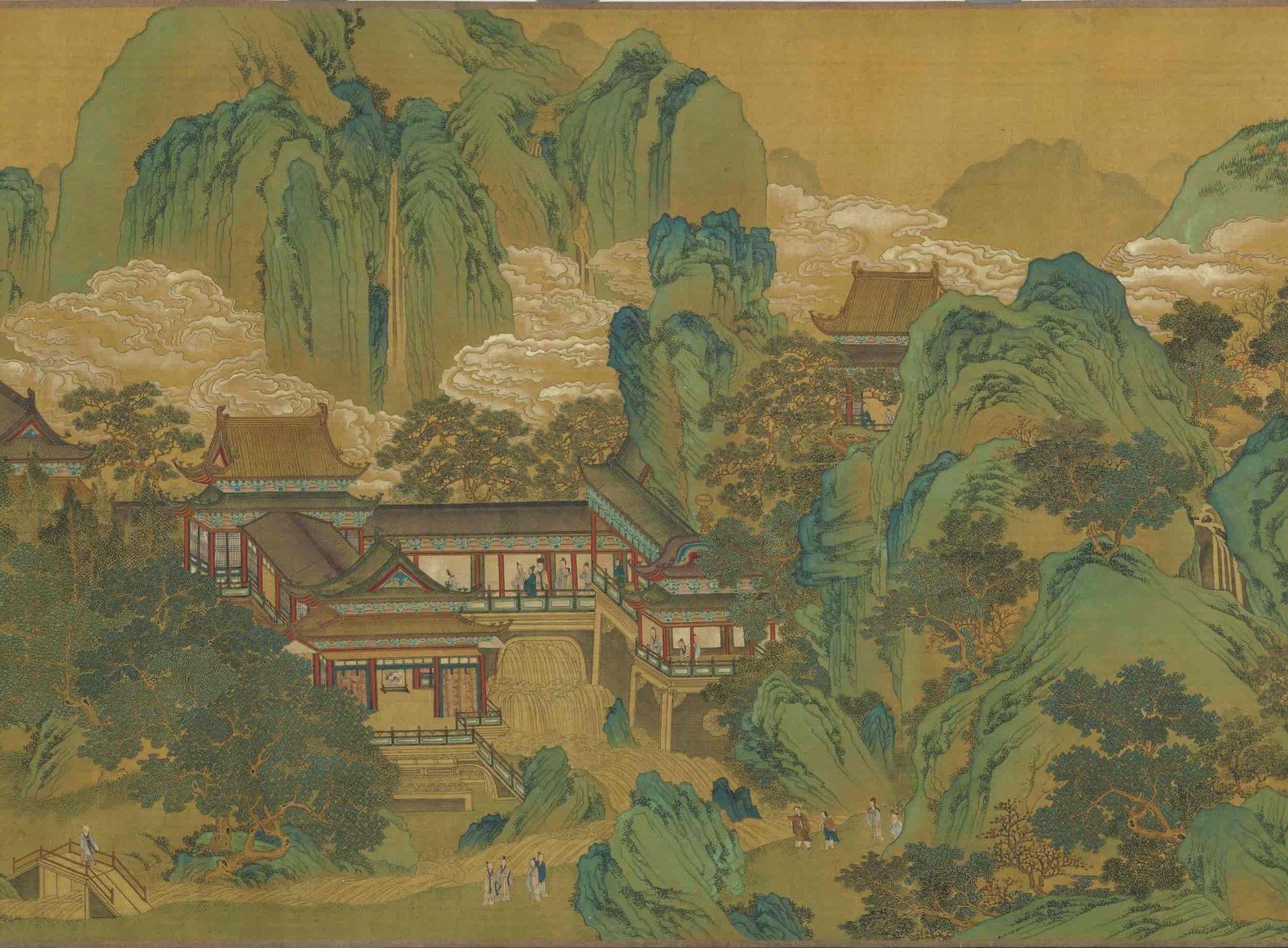
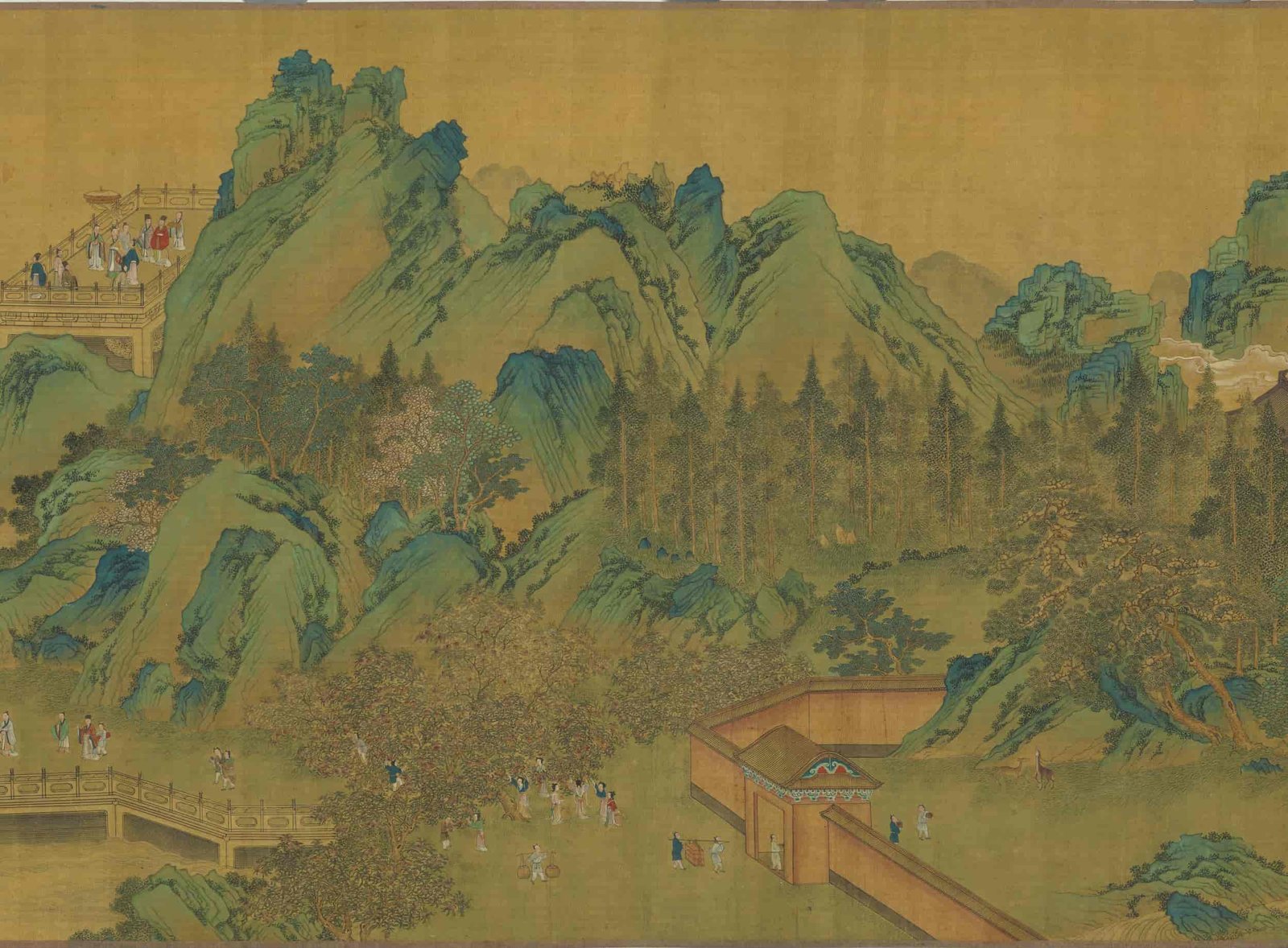
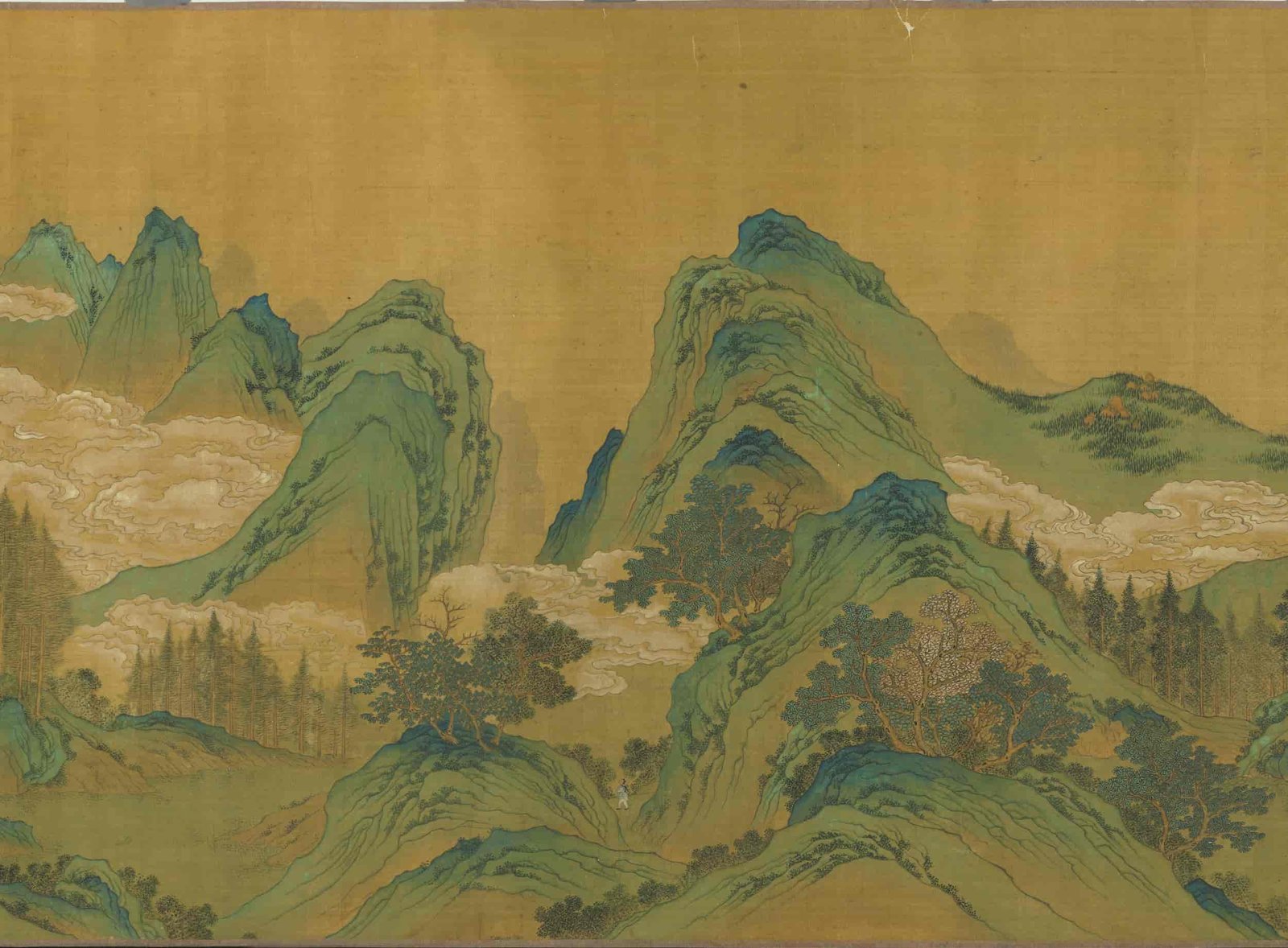
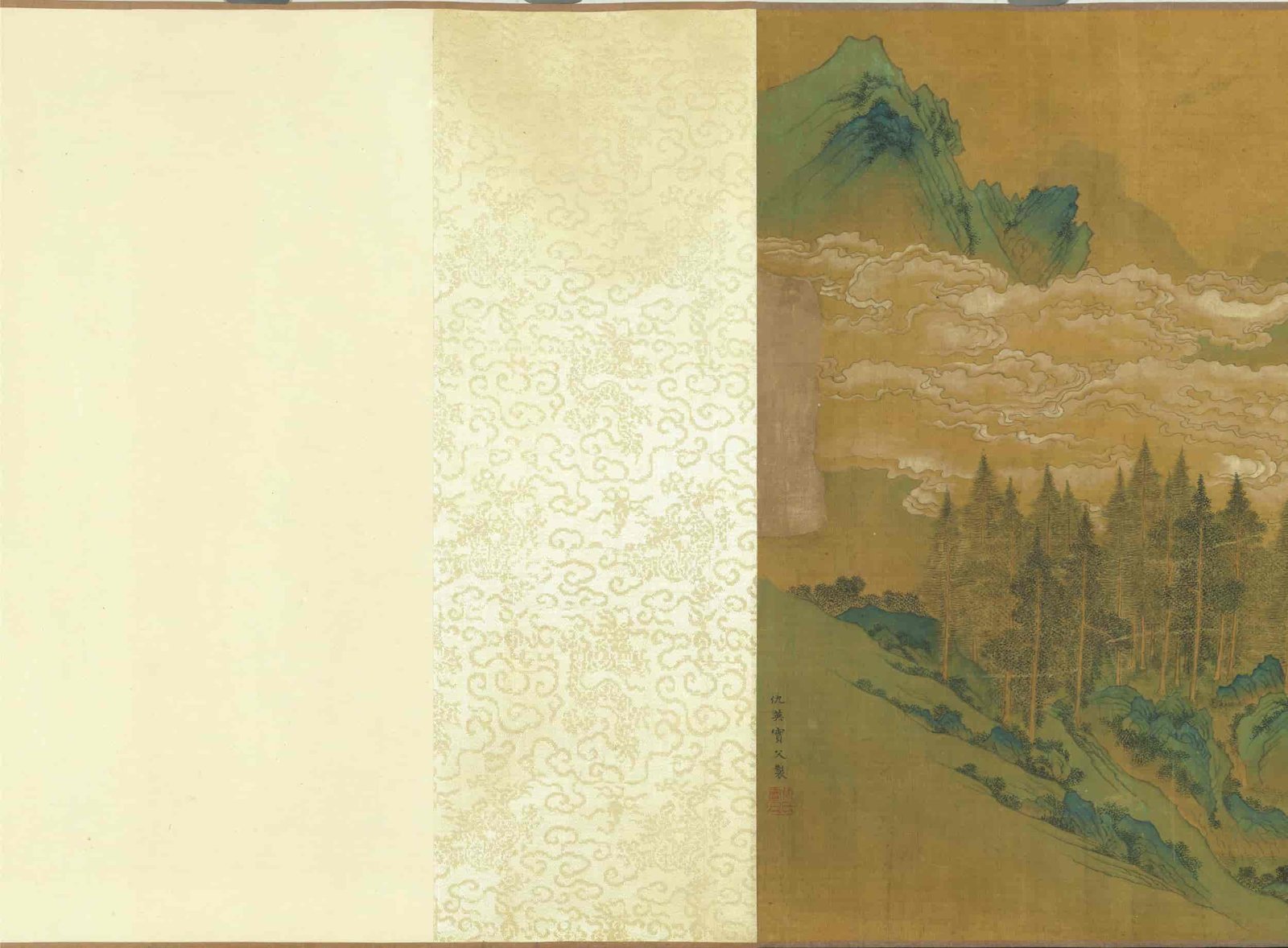
评价
目前还没有评价